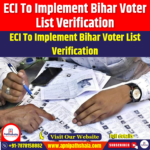GS Paper II – Parliament, Indian Constitution, Features of RPA Recently, the Election Commission of India announced that elections for 12 vacant Rajya Sabha seats will take place on September 3, 2024. |
COMPOSITION OF PARLIAMENT :
The Parliament consists of three integral chambers :
- President
- Council of States / Rajya Sabha – It represents states and Union Territories
- The Rajya Sabha is the upper house of the Parliament.
- The IV Schedule of the Indian Constitution addresses the allocation of seats in the Rajya Sabha to the states and Union Territories.
- ARTICLE 80 : It has a maximum membership of 250 members, of which the state and Union territory legislatures elect 238, and the President nominates 12 for their expertise in specific fields such as art, science, literature, and social service.
The current strength of the house is 245, with 229 members representing the states, 4 members representing the Union Territories, and 12 nominated by the President. |
- Rajya Sabha is a permanent chamber and never gets dissolved while the members(one-third retire after 2 years).
- House of People / Lok Sabha – It represents the people of India as a whole.
- The Lok Sabha is the lower house.
- It consists of a maximum of 552 members, of which 530 are elected from the states, 20 from the Union territories, and 2 are nominated by the President of India from the Anglo-Indian community (note: the provision for nominating Anglo-Indians has been abolished as of the 104th Constitutional Amendment).
- Members serve a term of five years unless the Lok Sabha is dissolved earlier.
Together, these two houses make up the Parliament of India, which is responsible for making laws, discussing national issues, and representing the interests of the people and states.
Note: The President is not a member of either of the houses but remains an integral part of parliament because any bill that is passed by any of these house becomes an act only if the President gives his/her assent.
ORIGIN OF RAJYA SABHA :
The origins of the Rajya Sabha, or the uper house, can be traced back to the Montague-Chelmsford Report of 1918. This report introduced a bicameral legislature, consisting of the Lower House that is Lok Sabha (Central Legislative Assembly) and the Upper House (Council of State).
Why are Rajya Sabha Elections Important?
LEGISLATIVE POWERS:
- Rajya Sabha maintains federal equilibrium, by protecting the interests of the states at the center.
- No Bill, except Money bills, can become a law without being passed by both houses.
JUDICIAL POWERS
- Removal of
- SC or HC judge
- Attorney General
- Comptroller and Auditor General
- Chief Election Commissioner
B. Charges against the Vice President can only be leveled in the Rajya Sabha
EXCLUSIVE POWERS
- Rajya Sabha can declare a State List subject as a subject of national importance (Article 249)
- Rajya Sabha can create new All India Services common to both center and states (Article 312)
- In case Lok Sabha dissolution occurs amid a national emergency, Rajya Sabha will take over the functions of Parliament.
Qualification to be Lok sabha member/ Rajya sabha:
- The age for Lok sabha is 25 and Rajya sabha is 30 years.
- For both Lok Sabha and Rajya Sabha one has to be a voter in any constituency across the country
SYSTEM OF ELECTION :
A. Representation of States
- The members are indirectly elected by elected members of State Legislative Assembly.
- Election principle employed: Proportional Representation through the Single Transferable Vote system.
- The state’s population is a factor that determines its representation in the Rajya Sabha.
B. Representation of Union Territories
- Rajya Sabha members representing Union Territories are indirectly elected by members of an electoral college specifically formed for this purpose.
- Election principle employed: Proportional Representation through the Single Transferable Vote system.
Note: Among the 8 Union Territories, only Delhi, Puducherry, and Jammu and Kashmir have representation in the Rajya Sabha.
- Representation of Nominated Members
- The President nominates 12 individuals to the Rajya Sabha for their contributions and expertise in the following fields:
– Art
– Literature
– Science
– Social Service
Amendment to the Representation of the People Act, 1951 :
Until 1998, the results of Rajya Sabha elections were often predictable, with majority parties in the state assembly frequently having their candidates win without opposition due to a lack of competition.
However, during the June 1998 Rajya Sabha elections in Maharashtra, cross-voting led to the defeat of a Congress party candidate.
Cross Voting: Cross-voting occurs when a member of a legislative body, such as a Member of Parliament or a Member of a Legislative Assembly, who belongs to one political party, votes for a candidate or party other than their own during an election or any voting process.
To curb cross-voting among MLAs, an amendment to the Representation of the People Act, 1951, was made in 2003.
- Section 59 of the Act was revised to state that voting in Rajya Sabha elections must be conducted via an open ballot.
- . MLAs belonging to political parties must display their ballot papers to their Party’s authorized agent. Not showing the ballot to the authorized agent or revealing it to others will lead to vote disqualification.
- Independent MLAs are not allowed to show their ballots to anyone.
Rajya Sabha Chairman And Deputy Chairman
The Indian Vice-President serves as the ex-officio chairman of the Rajya Sabha, while the deputy chairman is elected from among the members of the Rajya Sabha.
Does the Anti-Defection Law Apply to Rajya Sabha Elections?
- The Tenth Schedule of the Constitution, introduced by the 52nd Constitutional Amendment Act in 1985, includes provisions related to the “anti-defection” law.
- It states that a member of Parliament or a state legislature who voluntarily resigns from their political party or votes contrary to their party’s directives is subject to disqualification from the House.
- Such voting instructions are typically communicated by the party whip.
- The Election Commission clarified in July 2017 that the provisions of the Tenth Schedule, including the anti-defection law, do not apply to Rajya Sabha elections.
- Consequently, political parties cannot issue whips to their members for Rajya Sabha elections, and members are not obligated to follow party directives in these elections.
Explore our courses: https://apnipathshala.com/courses/
Explore Our test Series: https://tests.apnipathshala.com/









